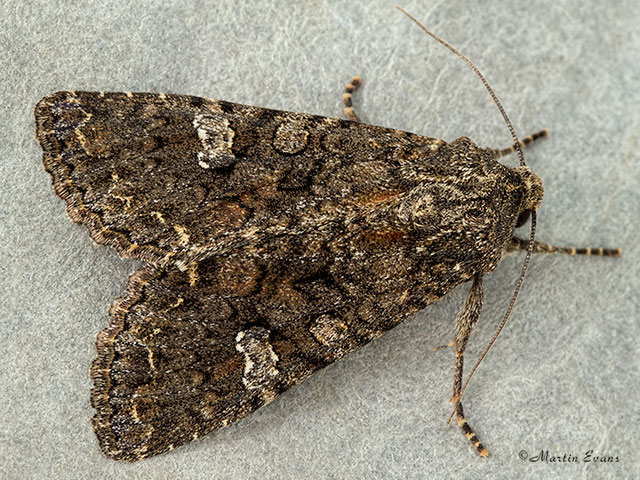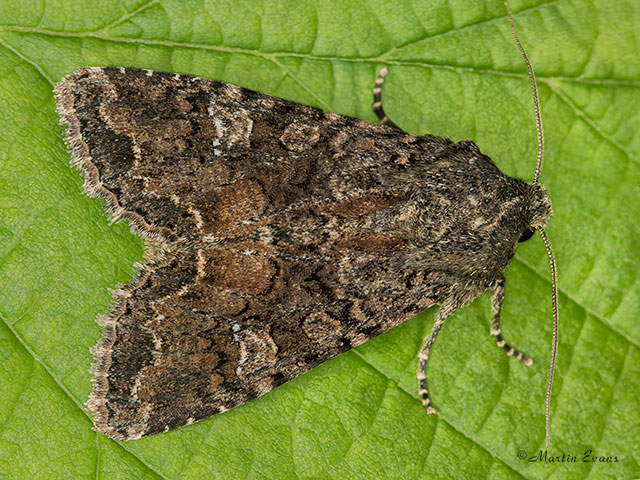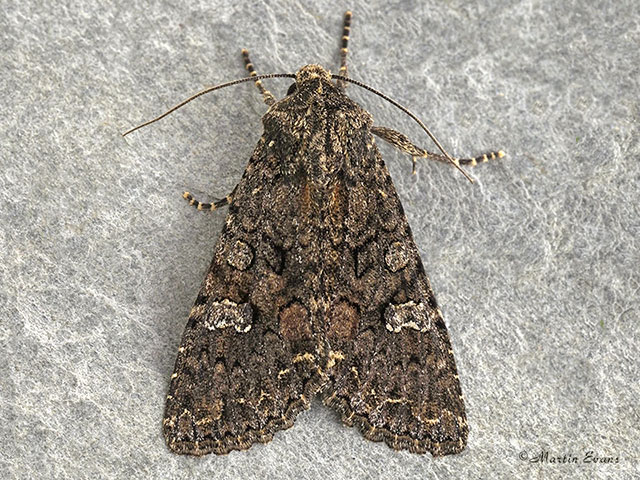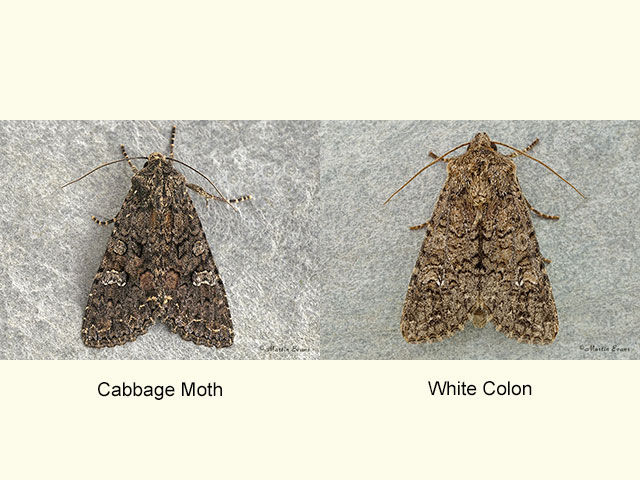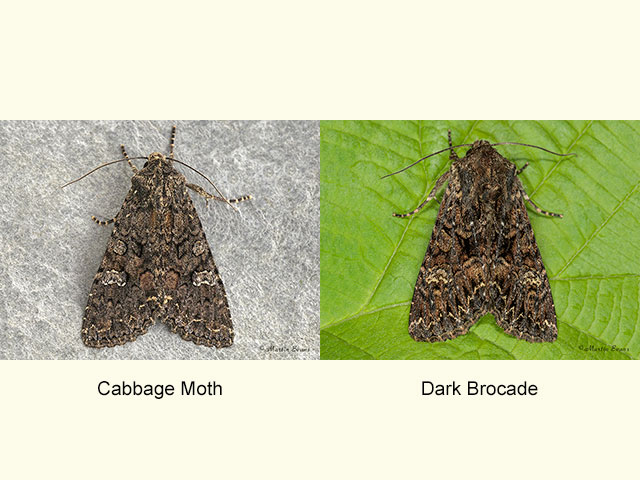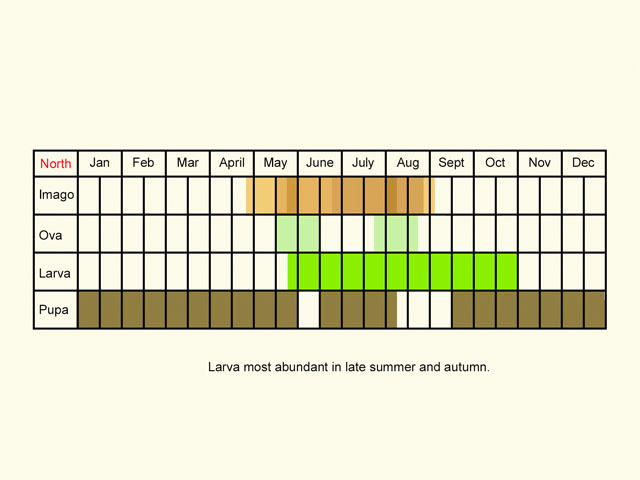Noctuidae
73.274 Cabbage Moth Mamestra brassicae (Linnaeus, 1758)
Common
Similar species: White Colon Sideridis turbida lacks the rufous colouring along the trailing edge of the wing and only has the outer corners of the kidney mark highlighted in white. Dark Brocade Mniotype adusta is browner in colour, has a jagged rather than smooth outer edge to the kidney mark and usually has a black bar running along the side of the tooth mark between the inner and outer central cross-lines. Using magnification it is possible to see there is no curved spine on the lower end of the tibia of the front leg.
Forewing: 14 to 22mm
Habitats: Allotments, gardens, wasteground, coastal downland and other grassland and open woodland.
Habits: The moth nectars at flowers and is attracted to sugar and sparingly to light.
Foodplant: The nocturnal larva is gregarious in its early instars, feeding on the leaves of a variety of herbaceous and woody plants including Cabbage and other Brassica species, Tomato, plantains, docks, Carnation, garden Columbine, sallows and oaks. It is considered a pest as it burrows into the centre of Cabbages and cultivated Brassicas. It hides near the ground or under the soil during the day. It pupates in a cocoon under the soil.
On the European mainland it has been recorded feeding on Greater Plantain, Rosebay Willowherb, Thorn Apple and Orache.
